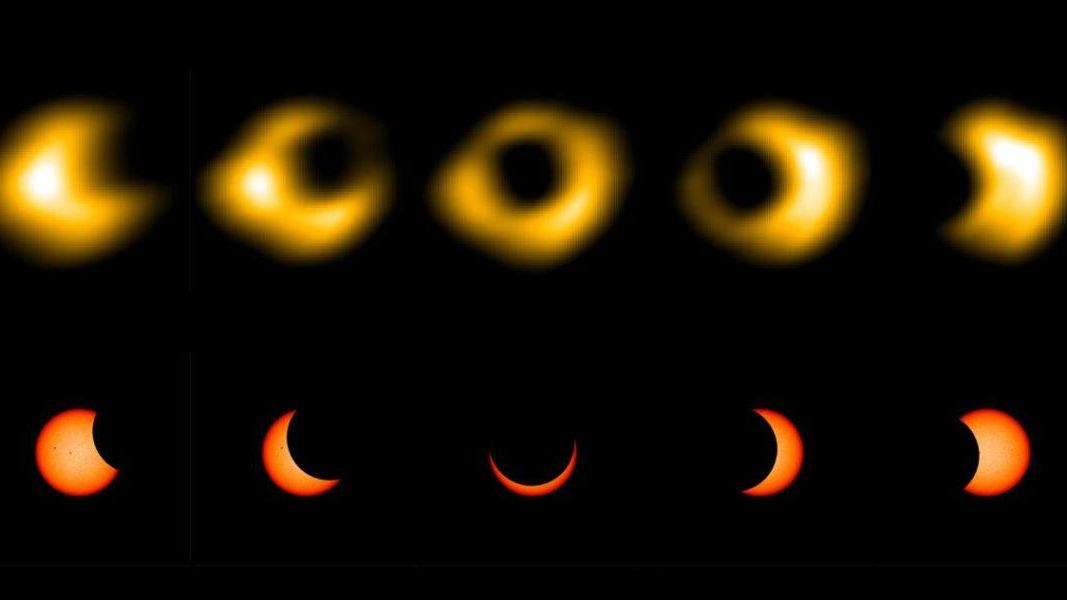
Your social media feeds might’ve been filled over the past couple of weeks with photos of the recent “ring of fire” annular eclipse, which crossed the western U.S. on Oct. 14. But it wasn’t just photographers who imaged the celestial event.
Scientists from the New Jersey Institute of Technology’s Center for Solar-Terrestrial Research (NJIT-CSTR) used the new Owens Valley Radio Observatory Long Wavelength Array (OVRO-LWA) in California to capture the first-ever radio images of an annular solar eclipse.
Using a set of 352 antennas measuring radio wavelengths between approximately 20 and 88 megahertz (MHz), the team captured images of the eclipse’s ring, which lasted for nearly an hour in the radio spectrum. By contrast, the visible light experience solar enthusiasts admired lasted only a few minutes. That’s because the radio sun is about twice as large as the visible solar disk.
Related: Annular solar eclipse of 2023 wows skywatchers with spectacular ‘ring of fire’ (photos, video)
“From our observatory site in California we were not in the belt to see the annular eclipse, yet we’ve been able to ‘see’ it all clearly unfold in radio, which reveals a much larger solar disk than its visible counterpart thanks to its sensitivity to the extended solar corona,” Bin Chen, NJIT-CSTR associate professor of physics, said in a statement.
The corona is not usually visible from the ground, except during a total solar eclipse (like the one occurring on Apr. 8, 2024), but OVRO-LWA has changed the game. Now, with this instrument, the corona is visible to us at all times — and researchers are particularly eager to observe it during other eclipses.
Related Stories:
“Science-wise, this is a unique opportunity to study the sun’s extended corona with the highest resolution possible at these wavelengths, taking advantage of the moon’s limb as a moving ‘knife edge’ to increase the effective angular resolution,” said Chen.
The team is now developing a process to produce “near-real-time solar images” for the public.
“These eclipse images serve as a proof-of-concept for this effort,” said Chen. “The unprecedented data products coming soon will open new opportunities for discovery in solar astronomy and space weather studies.”
